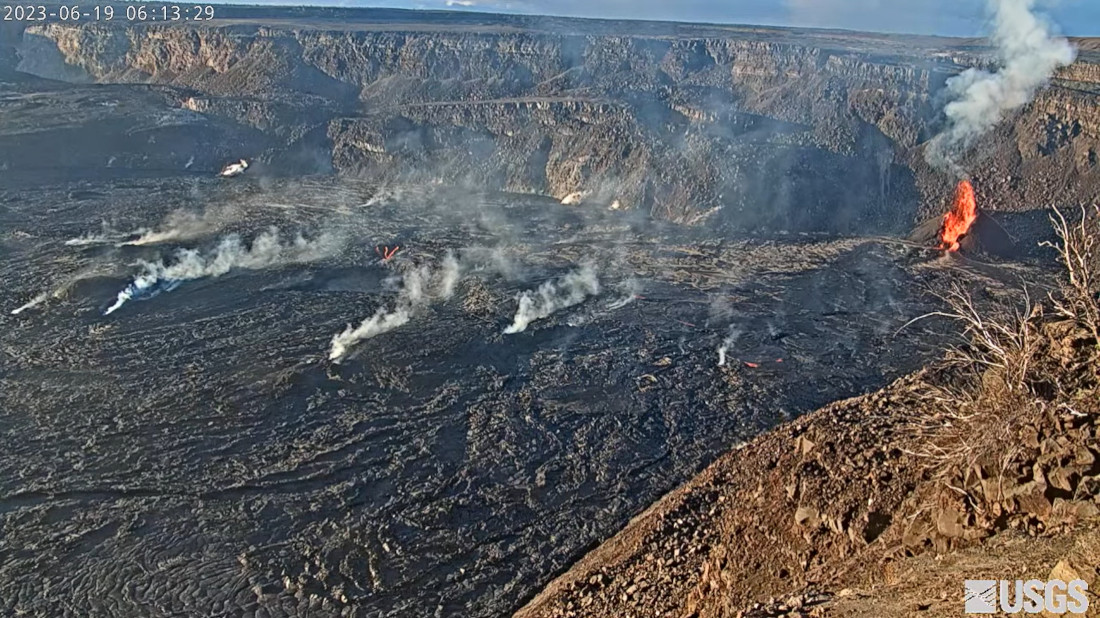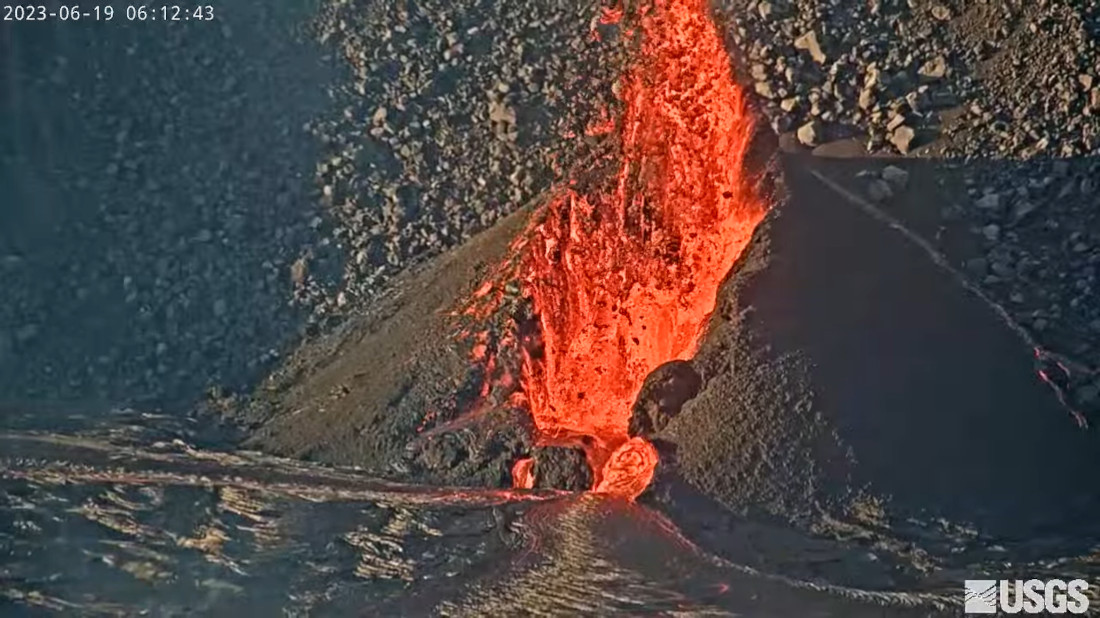
image from USGS webcam showing the eruptive vent on the southwest side of Halemaʻumaʻu on Monday morning
(BIVN) – Vigorous lava fountaining continues from a vent on the wall of Halemaʻumaʻu crater, as the eruption of Kīlauea volcano continues.
The USGS alert level for Kīlauea remains at WATCH, and all activity is confined to the summit caldera within Hawaiʻi Volcanoes National Park.
From a Monday update by the USGS Hawaiian Volcano Observatory:
Halemaʻumaʻu Eruption Observations: The eruptive vent on the southwest side of Halemaʻumaʻu continues fountaining and effusing into the lava lake in the far southwestern portion of the crater. The fountain at this vent has been vigorous; yesterday afternoon, a crew of Hawaiian Volcano Observatory geologists estimated that lava was consistently jetting to a height of at least 10 m (33 ft). Deposits from this fountain have further heightened and widened the spatter cone that now sits atop the original eruptive vent in the lower section of the crater wall. Yesterday a single stream of lava was effusing from the base of this cone into the southwestern lava lake, but early this morning a second stream broke off to feed lava onto the southwestern-most block from the 2018 collapse within Halemaʻumaʻu, and both streams are active at this time.
The surface of the southwestern lava lake continues to circulate and is slowly rising, along with the rest of the crater floor, which is uplifting endogenously from lava accumulation below the solidified crust. Lava circulation has been slowing within the central basin that became the focus of effusion during both the 2021–2022 and January–March 2023 eruptions, with its active lava surface shrinking and sitting several meters (yards) below the surrounding crust. Nearly constant overflows from the southwestern lava lake have been cascading into the central basin and accumulating on crusted sections of its floor. No active lava has been observed in the northern or eastern portions of the crater over the past day. A live-stream video of the crater is available (here).
Summit Observations: Tiltmeters in the summit region have been tracking steady deflationary tilt since Saturday morning, June 17. Summit seismic activity is dominated by eruptive tremor—a signal resulting from fluid movement, and commonly associated with eruptive activity. Volcanic gas emissions in the area remain elevated; a sulfur dioxide (SO2) emission rate of approximately 6,300 tonnes per day was measured on Friday, June 16.
Rift Zone Observations: No unusual activity has been noted along the East Rift Zone or Southwest Rift Zone; steady but low rates of ground deformation and seismicity continue along both. Measurements from continuous gas monitoring stations in the middle East Rift Zone—the site of 1983–2018 eruptive activity—remain below detection limits for SO2.


by Big Island Video News8:00 am
on at
STORY SUMMARY
HAWAIʻI VOLCANOES NATIONAL PARK - High lava fountains continue to erupt from the wall of Halemaʻumaʻu at the summit of Kīlauea.